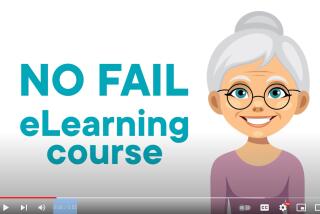Suffer the Little Children
- Share via
First there was Adam Walsh and then Polly Klaas and then Megan Kanka. All were murdered.
In each case, their deaths resulted in action aimed at protecting children from the rapists and killers who prey upon them.
Now there’s Brandi Joy Mitock, not a victim of murder but of a tragic accident, whose death is also the basis of legislation. It is aimed, however, at a different kind of danger.
Adam was 6 in 1982 when he was kidnapped and killed. His grieving father helped create a law that enhanced the search for missing children and also established the National Center for Missing and Exploited Children.
Polly Klaas was 12 in 1993 when she was dragged from her bedroom during a slumber party and murdered by a repeat offender on parole. Her death fueled passage by California voters of the three-strikes law a year later.
Megan Kanka was 7 in 1994 when she was raped and murdered by a sex offender who, unknown to anyone, lived across the street. It resulted in New Jersey’s Megan’s Law, duplicated elsewhere, requiring public disclosure of convicted sex offenders.
Grieving parents and outraged citizens, their passions ignited by the deaths of children, responded by memorializing them in laws of prevention.
One day soon, if her father has his say, there’ll be a statute similarly designed to save lives. It will be called Brandi’s Law.
*
At 15, Brandi Joy Mitock was her parents’ golden girl, both an athlete and a scholar, as good at blocking a soccer ball on the field as playing Chopin on the piano. Last year, she traveled to Europe with a girls soccer team and was studying French for a trip to Paris this year with her mother.
“She was full of dreams,” her father, Mark, says.
“She was full of life,” her mother, Marijane, says.
Three months ago their golden girl--witty, graceful and multitalented--had dashed into a street in Santa Monica when a car driven by Byron Cox struck and killed her. He paused briefly, then left the scene. Police found that neither the girl nor the driver saw each other.
Cox, who had a driver’s license, turned himself in later and pleaded no contest this week to felony hit-and-run driving. Although the charge carries a penalty of up to four years in prison, it is doubtful he will serve any time. Cox is 96.
Crushed by his daughter’s death, Mitock set about to do something to create a lasting and meaningful memorial to his golden girl.
He discovered that on a per-mile basis, drivers over 75 are five times more likely than others to be at fault in fatal collisions. He also discovered that, unlike other states, California has no special age-oriented tests for older drivers. He set about to change that.
*
In his words, Mitock “reached out to Tom Hayden and Hayden reached back.” Together, a grieving father and a state senator cooperated to create what they hope will become Brandi’s Law.
Noting that “it is possible to take only one driving test during your entire lifetime in California,” Hayden has introduced a bill that would require road, vision and written tests for anyone over 75 every time they seek a license renewal.
Up through the age of 80, that would be every four years. From 81 through 85, every three years. From 86 through 90, every two years. From 91 up, every year.
The measure notes that California has license restrictions for younger drivers and asks in so many words, why not restrictions on those whose driving skills inevitably decline with age?
“What happened was an unspeakable tragedy both for our family and for a man of 96, an upstanding citizen,” Mitock says. “I’m not vindictive, but he was not fit to be behind the wheel. The legislation speaks to that.”
There are more than 20 million licensed drivers in California. Almost 1 million are over 75. Forty are over 100. One is 105.
Aging is a factor we find difficult to confront in a youth-oriented culture. We get face lifts, dye our hair and ingest chemicals to stay young. Giving up the wheel in a car-crazy society is final acknowledgment of time’s erosive qualities. We’re suddenly old when we can’t drive anymore.
Brandi’s Law would require age to acknowledge itself for the sake of everyone. If a 96-year-old man hadn’t been driving that day in November, Brandi might still be that vital, lovely golden girl in her parents’ lives instead of a name on a law. That matters. It matters a lot.
*
Al Martinez’s column appears Tuesdays and Fridays. He can be reached online at al.martinez@latimes.com.
More to Read
Sign up for Essential California
The most important California stories and recommendations in your inbox every morning.
You may occasionally receive promotional content from the Los Angeles Times.













